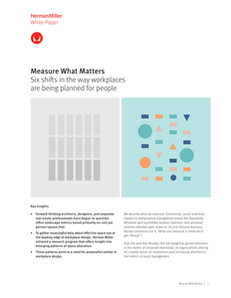Throughout the twentieth century, the efficiency of real estate portfolios was quantified primarily in terms of a building's cost per square foot and the average number of “usable square feet” it provided for each person who worked in it. By these measures, the workplace contributed to an organization's bottom line by (1) getting smaller and/or (2) fitting more people into the same amount of space.
Meanwhile, mobile technologies and new economic and social pressures ushered in new ways of working. By 2011, more than 60 percent of large organizations worldwide had implemented programs and practices that gave people more choice about where, when, and how to do their jobs.2 But although a few new workplace metrics (“collaborative seats per person,” “desk-sharing ratios”) have emerged, the focus on reducing direct costs (through allocating fewer square feet to “assigned seats” in individual offices or workstations) remains paramount


